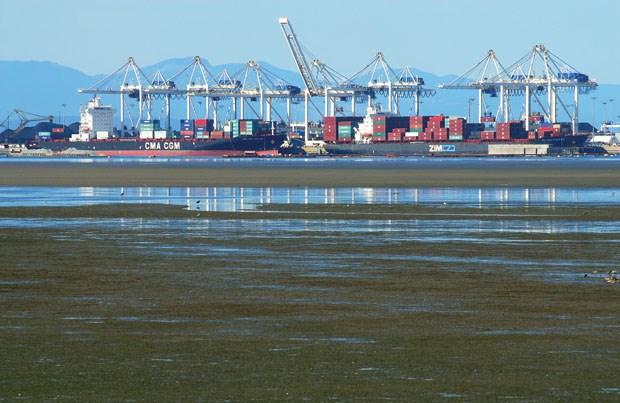Terminal 2 is now in the hands of the feds.
Port Metro Vancouver has submitted its comprehensive environmental document for T2 to the Canadian Environmental Assessment Agency, which will launch a lengthy review process.
The environmental impact statement summarizes the results of 77 studies undertaken over four years, with contributions from more than 100 professional scientists and more than 35,000 hours of field work, according to the port.
The port notes this research formed its assessment of potential environmental, economic, social, heritage and health effects of the project, including cumulative effects. The environmental impact statement includes proposed mitigation measures to reduce, avoid or offset potential effects and describes the monitoring and follow-up program that would be undertaken to ensure mitigation measures are effective.
As far as the environmental impacts, the document covers a range of topics from air and marine water quality to marine vegetation, including the much talked about issue of biofilm, a critical component of shorebird habitat. The proposed three-berth container terminal won't result in significant adverse residual or cumulative effects to marine vegetation at Roberts Bank, according to the impact statement.
"Overall, net productivity of marine vegetation is expected to increase with the project, without mitigation, and would be further increased with the implementation of environmental management plans and the creation of habitat," the report states.
During construction and operation, changes in productivity of eelgrass, biofilm and biomat are predicted to be negligible. The port's review also concludes the project "is not expected to result in measurable incremental adverse cumulative effects
to coastal birds."
Against Port Expansion is critical of those conclusions, saying the report's section on biofilm needs a complete re-working because it's woefully incomplete and has many information gaps. The baseline information lacks sufficient detail for the panel to properly understand the port's predictions, said APE's Roger Emsley, noting the port hasn't provided information on how it arrived at and supports its predictions.
"The interpretation of so-called scientific results is suspect and the reason for stating that there is no impact is not supported; there is no explanation of the differences between freshwater and marine biofilm; the model appears to lump all biofilm types together," Emsley said.
There are many research papers on biofilm that were not used, he added.
While the debate about the validity of the port's environmental assessment for T2 is ramping up, the Corporation of Delta is expressing other concerns to the Canadian Environmental Assessment Agency, including what it says is the exclusion of local and regional road and rail impacts.
The assessment "clock" for the project has stopped after the Canadian Environmental Assessment Agency requested additional information from the port related to marine shipping, information the port says will be submitted in late August.
The review isn't expected to be completed until at least sometime after 2017.



